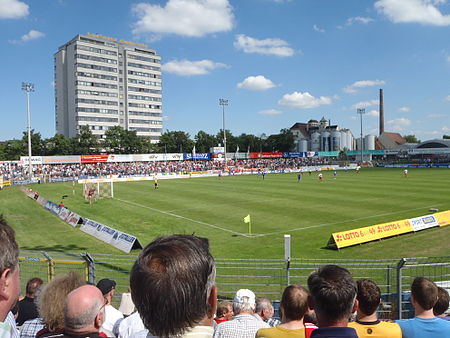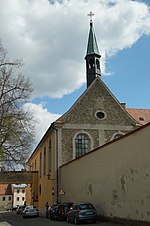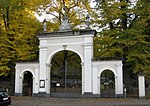Jahnstadion Regensburg (1926)
1926 establishments in GermanyBavaria building and structure stubsBuildings and structures in RegensburgFootball venues in GermanyGerman sports venue stubs ... and 7 more
Olympic football venuesSSV Jahn RegensburgSport in RegensburgSports venues completed in 1926Sports venues in BavariaSummer Olympic venue stubsVenues of the 1972 Summer Olympics

The original Jahnstadion Regensburg was a 12,500 capacity stadium in Regensburg, Germany. Until 2015 it was primarily used for football and was the home of SSV Jahn Regensburg. Built in 1926, it also hosted five football matches during the 1972 Summer Olympics. In 2017, it was mostly demolished and replaced by apartments and a school.
Excerpt from the Wikipedia article Jahnstadion Regensburg (1926) (License: CC BY-SA 3.0, Authors, Images).Jahnstadion Regensburg (1926)
Lessingstraße, Regensburg Königswiesen
Geographical coordinates (GPS) Address Phone number Website Nearby Places Show on map
Geographical coordinates (GPS)
| Latitude | Longitude |
|---|---|
| N 49.015555555556 ° | E 12.073888888889 ° |
Address
Kreuzschule im alten Stadion
Lessingstraße 27
93049 Regensburg, Königswiesen
Bavaria, Germany
Open on Google Maps











